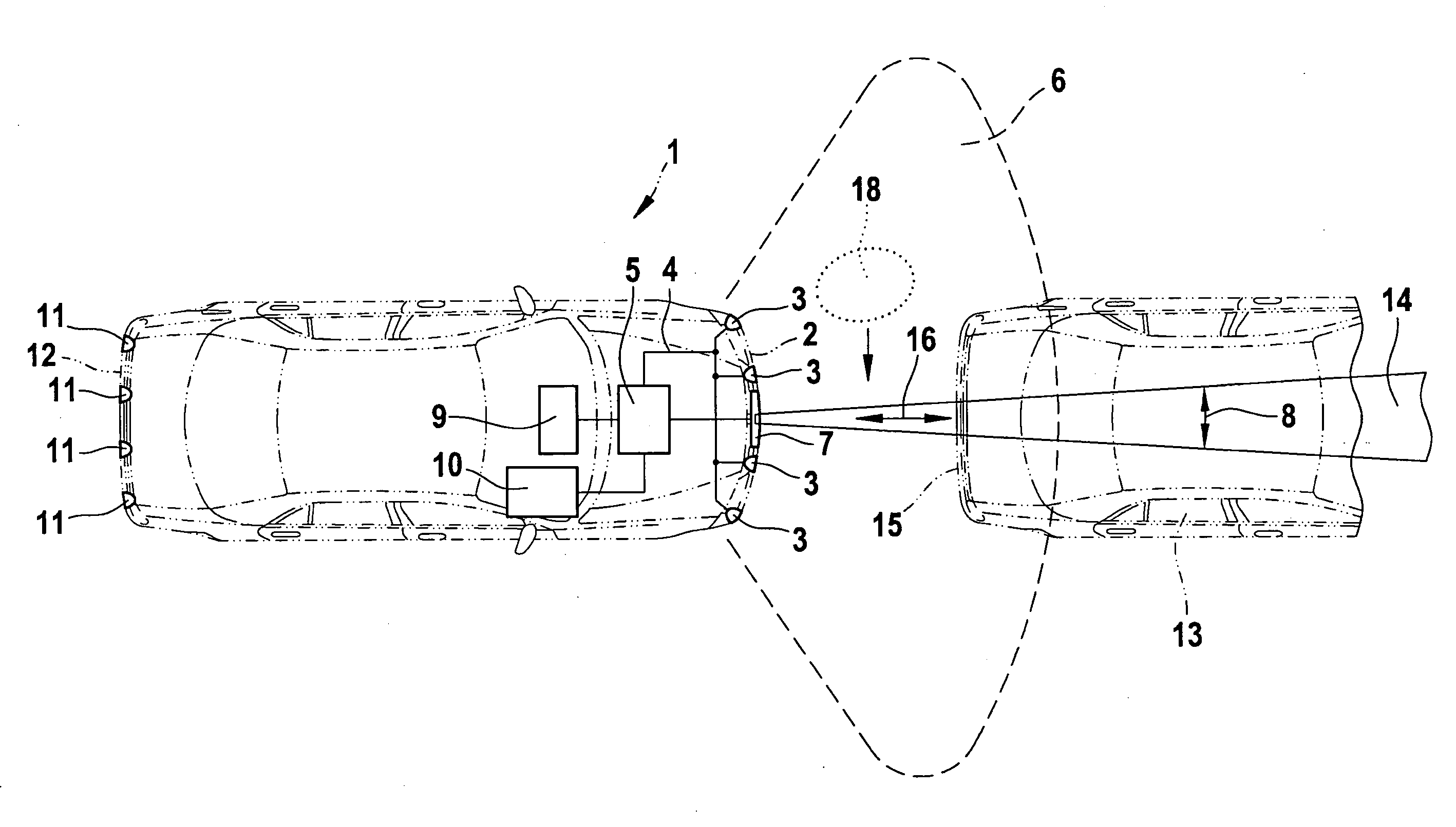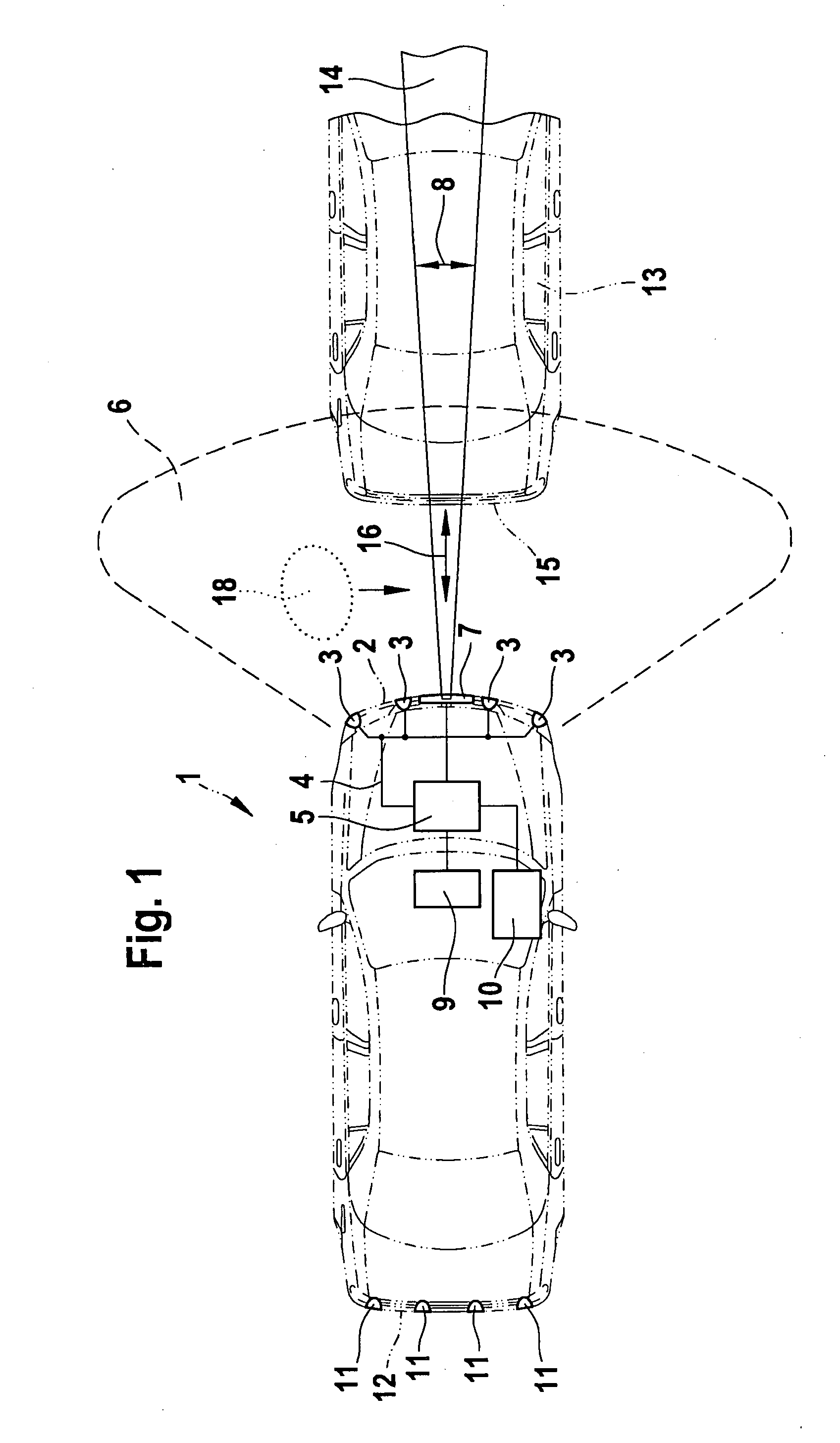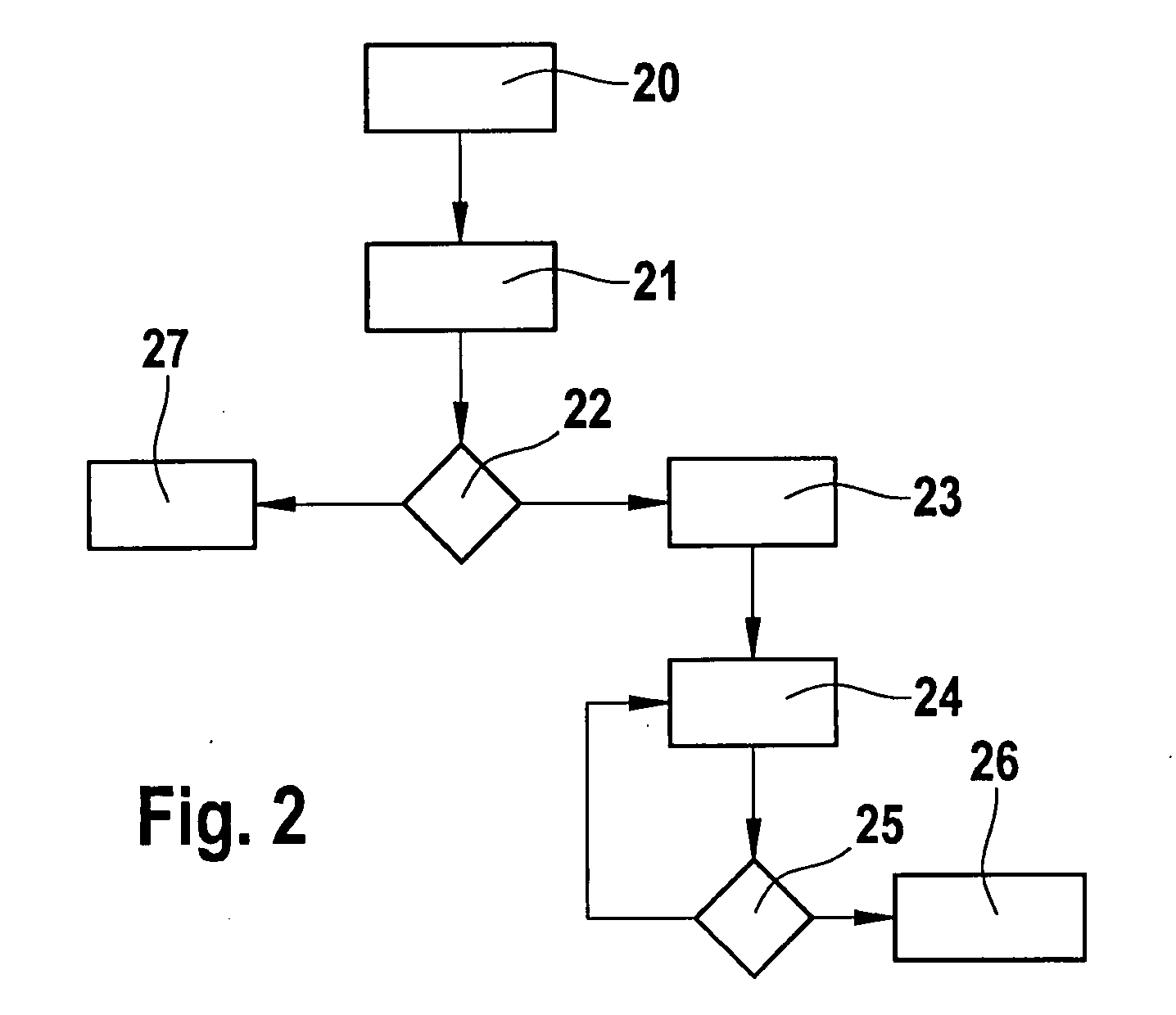Distance Measuring Device and Method for Testing the Operation of a Distance Measuring System
a technology of distance measurement and distance measurement device, which is applied in the direction of testing/monitoring control system, program control, instruments, etc., can solve the problems of inability to detect obstacles in the long-range measuring system, measurement may be impaired, and the entire area in front of the vehicle cannot be detected, so as to achieve the maximum possible angular coverage, reduce the effect of angular coverage and high degree of reliability of measured results
- Summary
- Abstract
- Description
- Claims
- Application Information
AI Technical Summary
Benefits of technology
Problems solved by technology
Method used
Image
Examples
Embodiment Construction
[0010]The present invention may be used for any desired distance measuring device that has at least two measuring systems operating by different measuring methods. The physical principles by which the measuring systems operate should be different. One measuring system may be an ultrasonic distance measuring system, for example. Another measuring system may be an infrared system which has two or more wide-angle sensors. A video distance measuring system having a camera analyzer, a LIDAR distance measuring system, a radar distance measuring system, or an acoustic distance measuring system may also be used as different measuring methods. It is advantageous, for example, if at least one ultrasonic distance measuring system and one radar distance measuring system are integrated in a distance measuring device of a vehicle. Therefore, the present invention is elucidated in the following on the basis of the example of such a distance measuring device.
[0011]A vehicle 1 having a distance meas...
PUM
 Login to View More
Login to View More Abstract
Description
Claims
Application Information
 Login to View More
Login to View More - R&D
- Intellectual Property
- Life Sciences
- Materials
- Tech Scout
- Unparalleled Data Quality
- Higher Quality Content
- 60% Fewer Hallucinations
Browse by: Latest US Patents, China's latest patents, Technical Efficacy Thesaurus, Application Domain, Technology Topic, Popular Technical Reports.
© 2025 PatSnap. All rights reserved.Legal|Privacy policy|Modern Slavery Act Transparency Statement|Sitemap|About US| Contact US: help@patsnap.com



